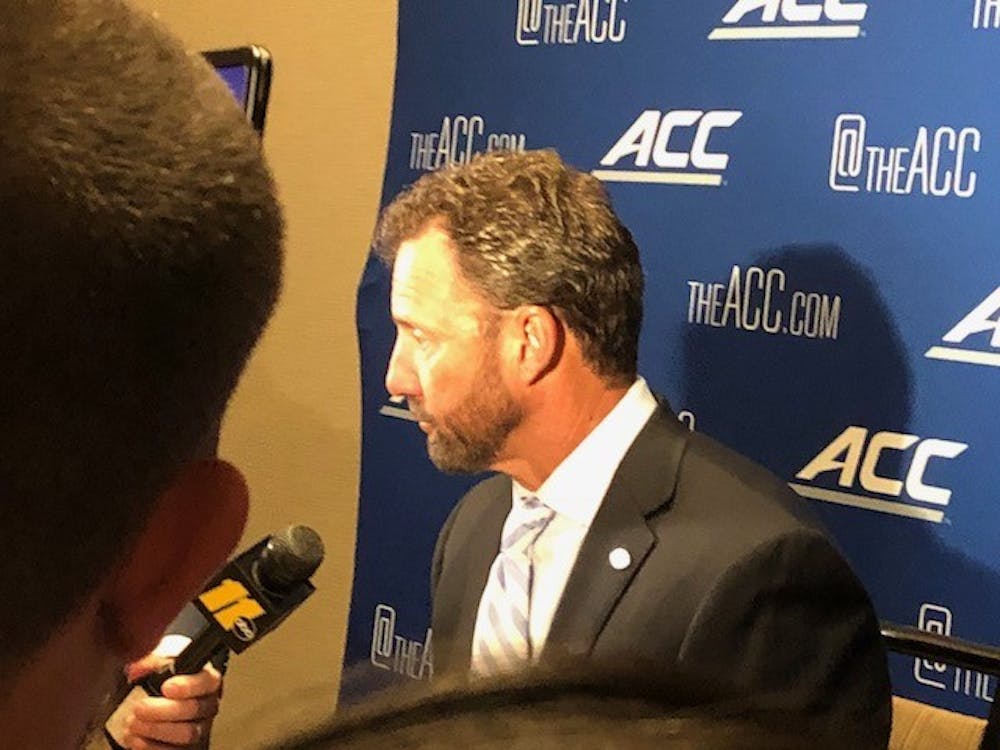This study is one of the first and one of the largest studies that aims to find a way to diagnose C.T.E. in living athletes and treat it upon diagnosis.
Prospective candidates for the survey were first surveyed by the Center for the Study of Retired Athletes, founded by Guskiewicz in 2001 and 2002. As part of the new study, participants will undergo neurological health screening and be broken into groups based on results, concussion history and symptom assessments.
Next, researchers will conduct neurobiopsychosocial research on the groups, including sophisticated brain scans to look for tau proteins, a characteristic of C.T.E. Following annual health surveys, a number of participants who exhibit impairment will be identified for further research into C.T.E. treatment.
The recruitment process of former NFL players will begin in the first week of January, Guskiewicz said.
"The fear of many players is that this stigma has been placed on them," Guskiewicz said. "Most NFL players retire in their early-to mid-30s. They're like, 'we have quite a long life to live after football. We want to go off and be successful contributors to society. But there's this stigma that we're 'damaged goods.''"
The majority of athletes that play contact sports do not develop degenerative brain diseases, Guskiewicz said, but he wants to advance the science to understand who is at risk and how these diseases can be prevented.
Hoffman is one of three former UNC football players to be diagnosed with C.T.E., according to a 2018 analysis by the Concussion Legacy Foundation of data from the VA-BU-CLF Brain Bank. The analysis shows that C.T.E. has been diagnosed in graduates from 147 college football programs, including at least one school with three or more C.T.E. cases from every Power 5 conference.
It is too late to help Hoffman and the other two UNC players diagnosed with C.T.E. Perhaps they were simply unlucky enough to play in an era when brain injuries were largely ignored and the rules surrounding them were not stringent enough.
Even Larry Fedora, UNC’s former head football coach who questioned links between C.T.E. and football in July, has said that during his own playing career, he gave little thought to concussions but likely suffered several. But for the 122 players on UNC football’s 2018 roster, and the countless others who will follow, researchers are working to reduce the likelihood of concussions.
To prevent bias in determining when an athlete can return to their sport, UNC Sports Medicine and the Athletic Department use an independent medical model, as recommended by the NCAA.
“In a lot of schools, sports medicine is underneath athletics, meaning that the athletic trainers and sometimes physicians are reporting to the athletics department or a coach,” said Dr. Mario Ciocca, director of Sports Medicine and the head primary care physician for the football, baseball and men’s soccer teams. “If you have an athletic trainer working for a football coach, and that football coach is putting pressure on you to get someone back in a game, no matter how good of an athletic trainer you are, that biases your decision-making in terms of making the right medical decision.”
At UNC, athletic trainers report to Ciocca, who then reports to Student Affairs to maintain separation between sports medicine and athletics and facilitate decision-making based on medical information.
To get the day's news and headlines in your inbox each morning, sign up for our email newsletters.
Under UNC’s current concussion policy, created by the Department of Sports Medicine and the Department of Athletics, no student-athletes suspected of having a concussion are allowed to return to their sport on the day of the suspected concussion. Once the student-athlete has been asymptomatic for at least 24 hours, his or her condition is assessed relative to a mandatory baseline assessment conducted during every student-athlete’s first year. Once a student-athlete’s score on these assessments is at least 95 percent relative to the baseline, a 5-Step Graduated Exertional RTP Protocol, a process which gradually reintroduces a student-athlete to their sport over a minimum of two days, begins.
Certain circumstances, such as overly lengthy recovery times, can lead to conversations with student-athletes about what the risk of a future concussion is, what the long-term effects may be and whether or not it's safe to return to their sport, Ciocca said.
Meanwhile, research by Guskiewicz has influenced policy changes to reduce concussion risks. In 2004, UNC used technology in player's football helmets to measure the number, intensity and location of impacts players received.
"One of the things we found from that work is that the kick-off play is a dangerous play," Guskiewicz said. "So we recommended a rule change of changing the kick-off the NFL and the NCAA, and they made that change. It reduced concussions on that kick-off play significantly, by over 50 percent in the past six years."
In 2011, the Gfeller-Waller Concussion Awareness Act, which includes an educational program to raise awareness of concussions in student-athletes and direction for identification and management of sports-related concussions, was signed into law in North Carolina.
"There have been a number of people calling to ban the sport of football or to dramatically change the rules of football," Guskiewicz said. "The science and the research has driven change, and I think there's a lot more to be done that we're still investigating. We know more about C.T.E. today than we did ten years ago, fifteen years ago. We still have a lot to learn."
@21taylorpot
university@dailytarheel.com



